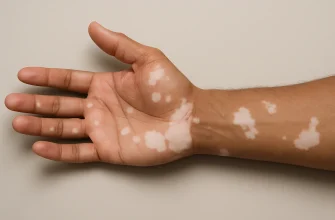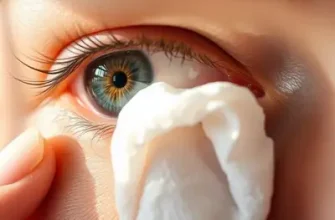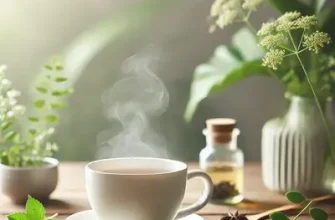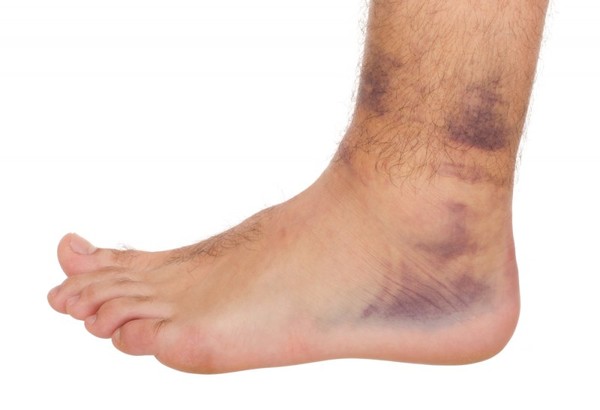Is that tingling on your lip just dry skin, or the start of something viral? Ever wonder if those annoying blisters you get during stress are cold sores—or something more? Can cold sores actually be a sign of oral herpes, and if so, how do you tell the difference? These questions are more common than you’d think.
Top 5 Common Symptoms: Cold Sores vs. Oral Herpes
| Symptom | Cold Sores (%) | Oral Herpes (%) |
|---|---|---|
| Tingling | 95% | 92% |
| Blisters | 90% | 88% |
| Pain | 85% | 80% |
| Swelling | 60% | 50% |
| Fever | 25% | 30% |
This chart compares the top five most common symptoms associated with cold sores and oral herpes. Tingling, blisters, and pain are highly prevalent in both conditions, while swelling and fever appear less frequently. The similarities highlight that these conditions are closely related, though slight differences in symptom percentages may help distinguish them.
What Are Cold Sores?
Cold sores, also known as fever blisters, are small, fluid-filled lesions that typically appear on or around the lips. They often start with a tingling or burning sensation before the visible blister forms. Cold sores are caused by the herpes simplex virus type 1 (HSV-1), which is highly contagious.
What Is Oral Herpes?
Oral herpes refers more broadly to any herpes simplex virus infection that affects the mouth area. While HSV-1 is the most common culprit, HSV-2 (commonly associated with genital herpes) can also cause oral herpes, particularly through oral-genital contact.
Are Cold Sores and Oral Herpes the Same Thing?
Here’s where the confusion often kicks in. Cold sores are a visible symptom of oral herpes. So yes, all cold sores are oral herpes, but not all oral herpes cases result in cold sores.
| Term | Definition | Virus Type | Visible Symptoms |
|---|---|---|---|
| Cold Sores | Blisters on or around the lips | Usually HSV-1 | Yes (blisters, pain) |
| Oral Herpes | Herpes infection in the mouth area | HSV-1 or HSV-2 | Sometimes |
How Common Is It?
According to the World Health Organization, about 67% of the global population under age 50 is infected with HSV-1. In the U.S., the CDC reports that roughly 48% of people aged 14–49 have HSV-1.
Cold Sore Outbreak Frequency (Patients with HSV-1, % of Respondents)
| Frequency | % of Respondents |
|---|---|
| Once a year | 30% |
| 2–3 times/year | 35% |
| 4–6 times/year | 20% |
| Monthly | 10% |
| Rarely | 5% |
This chart displays how frequently patients with HSV-1 experience cold sore outbreaks. The majority report outbreaks 2–3 times per year, while a significant portion only experiences them once annually. Monthly outbreaks are less common, and only a small group experiences them rarely.
How Is It Spread?
Cold sores and oral herpes are spread primarily through direct contact with infected skin or saliva. Common routes include:
- Kissing
- Sharing utensils or lip balm
- Oral-genital contact
- Touching the sore and then touching other areas
Symptoms: What Should You Look Out For?
Symptoms vary depending on whether it’s a first-time infection or a recurrence.
Primary (initial) outbreak:
- Painful blisters or ulcers in/around the mouth, often starting as red, tender spots that evolve into fluid-filled blisters
- Swollen lymph nodes under the jaw or neck area
- Fever (100–102°F / 37.7–38.8°C) lasting 1–3 days
- Sore throat and difficulty swallowing
- Fatigue and general malaise for up to a week
- Duration: 7–14 days from first symptom to complete healing
Recurrent outbreaks:
- Tingling, burning, or itching sensation at the site (usually lips or edge of mouth) 6–24 hours before blisters appear
- Small cluster of blisters that may burst and crust over
- Mild discomfort or tightness around the mouth area
- Often triggered by stress, illness, sunlight, or hormonal changes
- Duration: 5–7 days with prompt treatment, up to 10 days without
- Typically less severe than the initial outbreak
Diagnosis Methods
Modern diagnostics offer accurate and fast results. Here’s a breakdown:
| Diagnostic Method | Description | Accuracy (1–10) | Average Cost (USD) |
|---|---|---|---|
| PCR Test | Detects viral DNA from a swab | 10 | $100–$250 |
| Viral Culture | Virus grown from a swab sample | 7 | $80–$150 |
| Serologic Blood Test | Detects HSV antibodies in the blood | 8 | $50–$100 |
| Tzanck Smear (outdated) | Scraping of ulcer for microscopic analysis | 5 | $20–$40 |
Modern Treatment Options

Treatment focuses on reducing symptoms and speeding up recovery.
Antiviral Medications
| Medication | How to Use | Effectiveness (1–10) | Average Cost (USD) |
|---|---|---|---|
| Acyclovir (Zovirax) | Take 400 mg orally 3–5 times daily for 5–10 days. Begin at the first sign of symptoms. | 7 | $15–$40 (generic) |
| Valacyclovir (Valtrex) | Take 2 grams orally every 12 hours for 1 day (episodic) or 500 mg daily (suppressive). | 9 | $25–$70 (generic) |
| Famciclovir (Famvir) | Take 1500 mg orally as a single dose at symptom onset. | 8 | $40–$100 |
Application Forms:
- Oral tablets: Most effective and preferred for episodic and suppressive treatment. Start within 24 hours of symptom onset.
- Topical creams (e.g., docosanol/Abreva): Apply 5 times a day to the affected area at the first sign (tingling stage). Works best early. Effectiveness: 6/10. Cost: $15–$25.
- IV formulations: Reserved for immunocompromised patients or severe first-time outbreaks. Administered in clinical settings. Effectiveness: 10/10. Cost: $300–$1,000.

New Innovations
| Method | Description | Effectiveness (1–10) | Average Cost (USD) |
|---|---|---|---|
| Luminance Red | Handheld LED red light therapy used twice daily for 60 seconds at outbreak onset. Promotes healing and reduces pain. | 8 | $75–$150 (device) |
| Gene editing (CRISPR) | Still in research. Aims to eliminate latent virus from nerve cells. | 10 (theoretical) | N/A (experimental) |
| AI detection apps | Users upload photos of lesions for early detection advice. Still limited but improving. | 6 | Free–$10 (per use) |
Treatment Effectiveness for Cold Sores (Average Time to Heal, Days)
| Treatment | Average Time to Heal (Days) |
|---|---|
| No Treatment | 10 days |
| OTC Creams | 7 days |
| Prescription Antivirals | 4 days |
| Home Remedies | 8 days |
This chart illustrates the average healing time for cold sores based on different treatment methods. Prescription antivirals significantly reduce healing time, while OTC creams and home remedies offer moderate improvement. Without treatment, healing typically takes the longest.
Can You Prevent Outbreaks?
Yes, to some extent. Here are some practical tips:
- Avoid direct contact with active sores: Do not kiss or engage in oral contact with anyone during an outbreak. Even a small sore is contagious.
- Don’t share personal items: This includes lip balm, eating utensils, razors, or towels. Wash your hands frequently if you’ve touched your face.
- Use lip balm with SPF: Sun exposure is a common trigger. Choose a balm with at least SPF 30 and apply it regularly when outdoors, especially in dry or sunny conditions.
- Manage stress levels: Practice structured time management, take frequent short breaks, and get 7–9 hours of sleep per night. Stress is a major outbreak trigger.
- Consider daily antiviral meds if outbreaks are frequent: If you experience more than 3–4 episodes a year, talk to your doctor about suppressive therapy. Clinical studies show daily Valacyclovir can reduce recurrence by up to 70%.
Real Medical Case
Male, 32, Atlanta, GA: James, a software engineer and avid coffee drinker, began experiencing painful lip blisters every exam season back in college. Stress was a major trigger. After finally seeing a dermatologist, he tested positive for HSV-1. He was prescribed Valacyclovir for daily suppressive therapy. Within six months, his outbreaks dropped from six times a year to just once, and he reported faster healing and significantly less anxiety around flare-ups.
Female, 27, Seattle, WA: Maria, a barista and amateur photographer, noticed she developed cold sores after long weekends working double shifts outdoors. She assumed it was just sunburn until a cluster of painful blisters appeared near her upper lip. A PCR swab confirmed oral herpes (HSV-1). She started using docosanol (Abreva) at the first sign of tingling and took Valacyclovir as needed. She also switched to a lip balm with SPF 30, which she credits with preventing future flare-ups.
Expert Recommendation
Reyus Mammadli, healthcare advisor, recommends early intervention at the tingling stage. “Using antiviral meds within the first 24 hours of symptoms can shorten healing time dramatically and prevent lesion formation.”
Editorial Advice
Oral herpes may be incredibly common, but it doesn’t have to rule your life. With modern diagnostics and treatment options, managing cold sores is more convenient than ever. Reyus Mammadli, healthcare advisor, emphasizes the importance of knowing your triggers—like stress, sun exposure, and illness. Regular use of protective lip balms and a healthy lifestyle can help keep outbreaks at bay.
When in doubt, see a healthcare provider to confirm the diagnosis and discuss treatment options tailored to your lifestyle and medical history.
References
- FDA. “CRISPR Gene Editing Research and Applications.” https://www.fda.gov/media/113878/download
- World Health Organization (WHO). “Herpes Simplex Virus.” https://www.who.int/news-room/fact-sheets/detail/herpes-simplex-virus
- Centers for Disease Control and Prevention (CDC). “Genital Herpes – CDC Fact Sheet (Detailed).” https://www.cdc.gov/std/herpes/stdfact-herpes-detailed.htm
- National Institutes of Health (NIH). “Herpes Simplex Virus Infections.” https://www.ncbi.nlm.nih.gov/books/NBK7782/
- American Academy of Dermatology (AAD). “Cold sores: Diagnosis and treatment.” https://www.aad.org/public/diseases/a-z/cold-sores-treatment
- Mayo Clinic. “Cold Sores.” https://www.mayoclinic.org/diseases-conditions/cold-sore/symptoms-causes/syc-20371017
- Johns Hopkins Medicine. “Herpes Simplex Virus Infections.” https://www.hopkinsmedicine.org/health/conditions-and-diseases/herpes-simplex-virus-infections
- Luminance RED. “Red Light Therapy for Cold Sores.” https://luminancered.com/pages/red-light-therapy-cold-sores
- Abreva (docosanol). Product information. https://www.abreva.com








